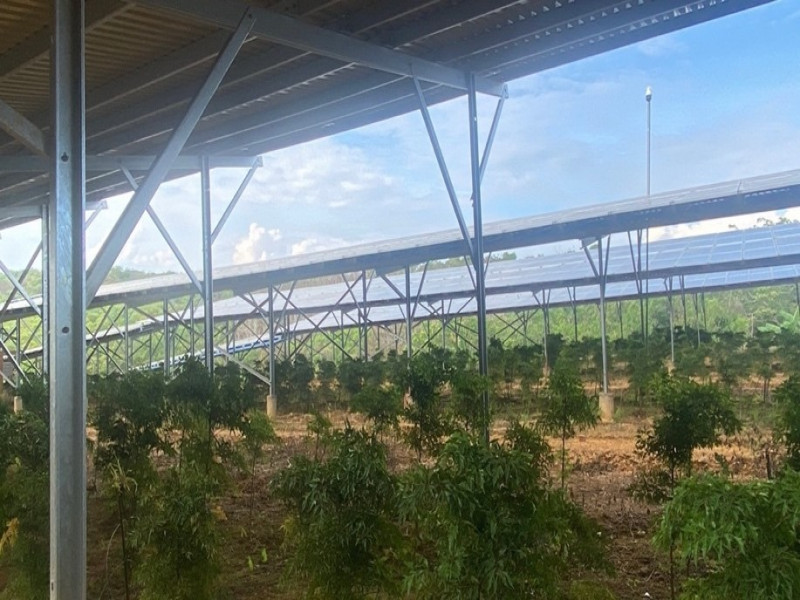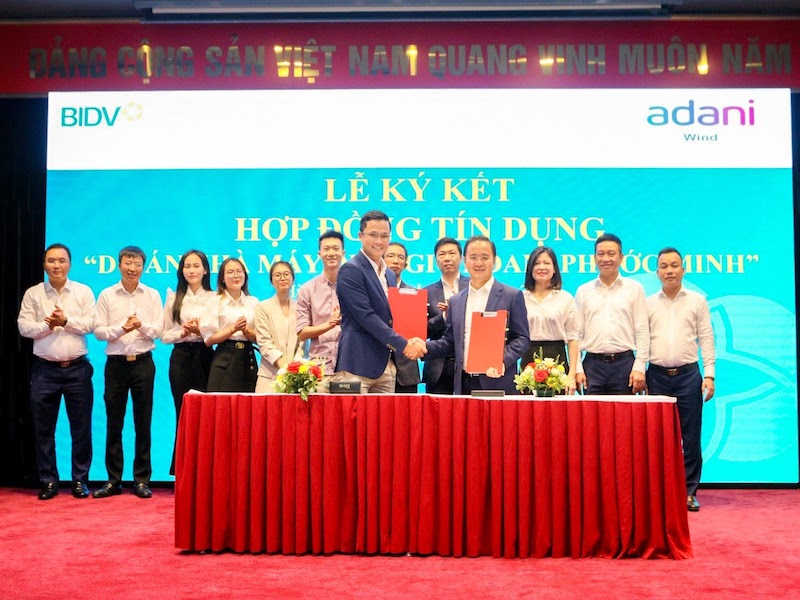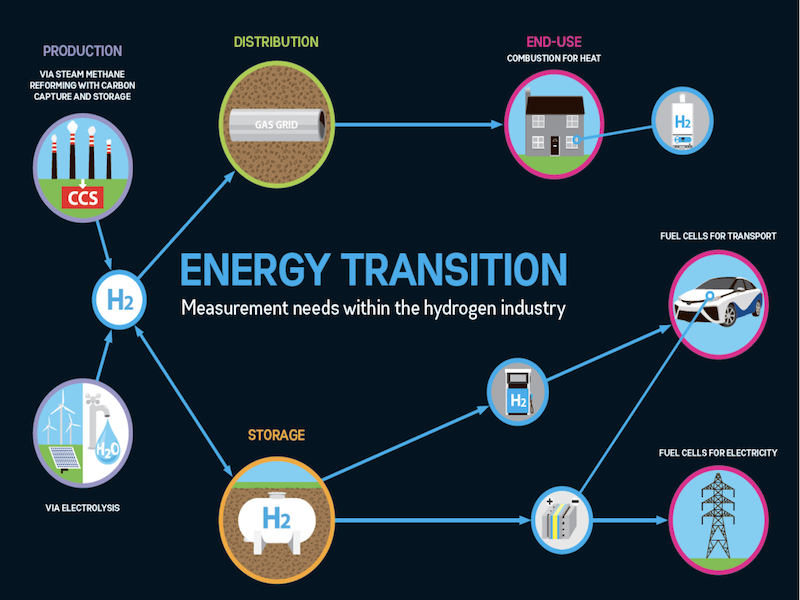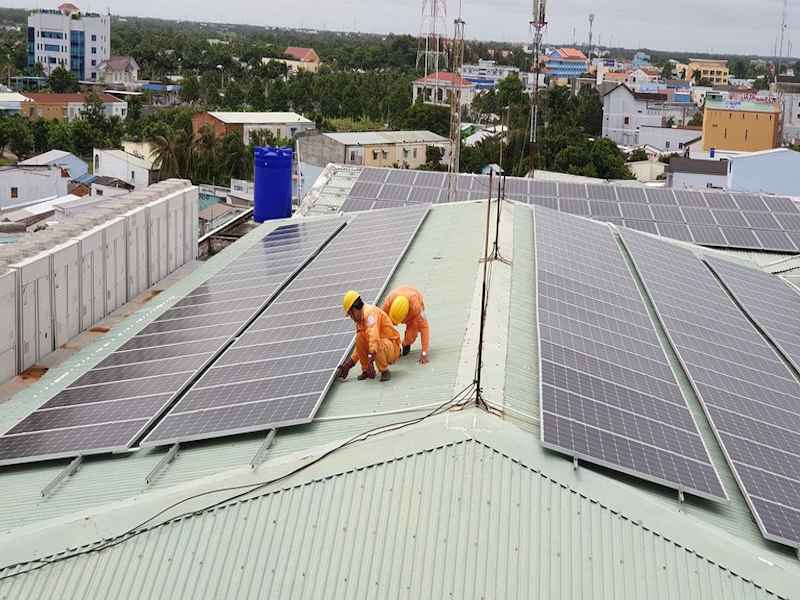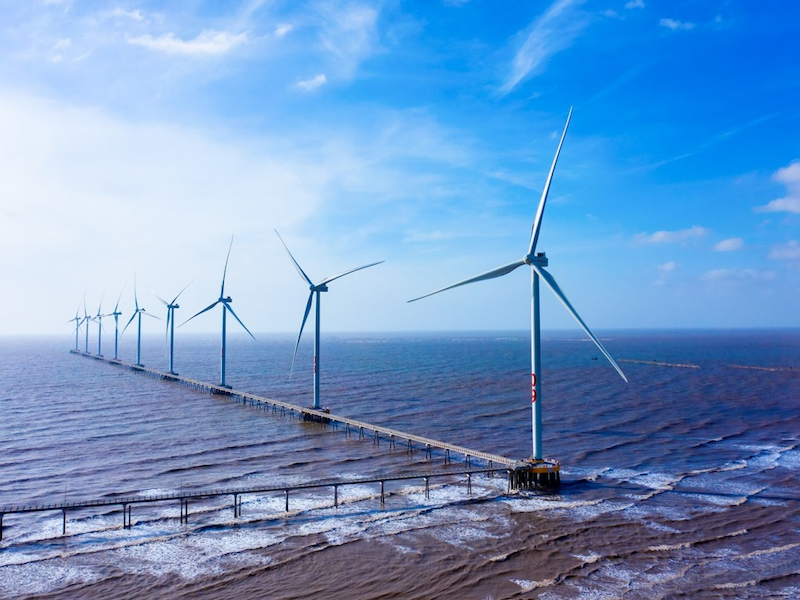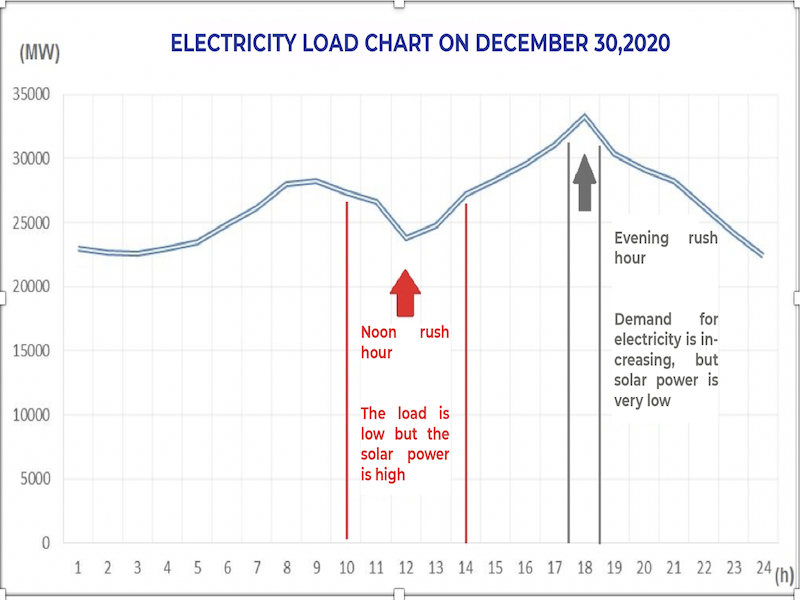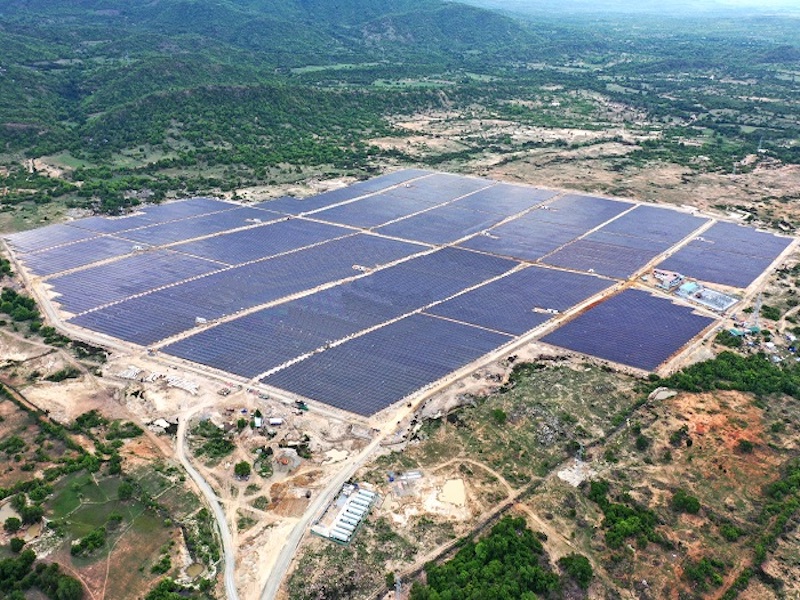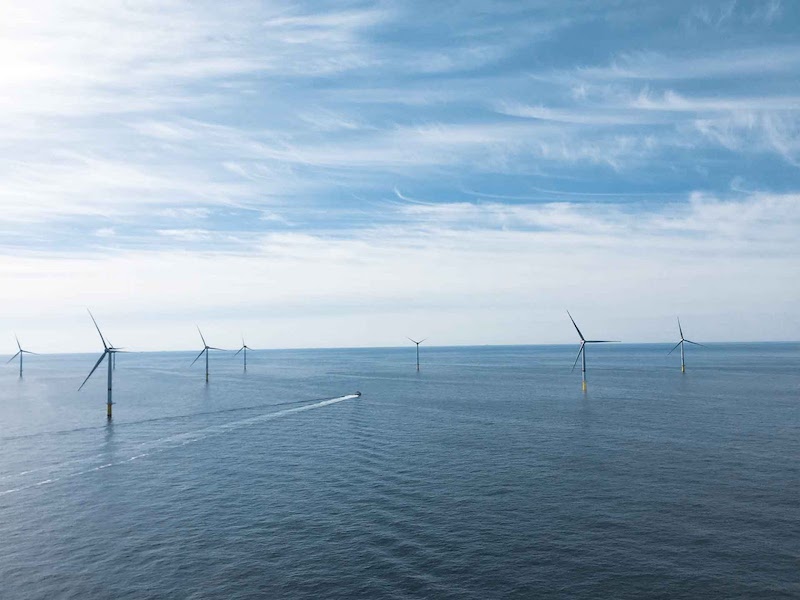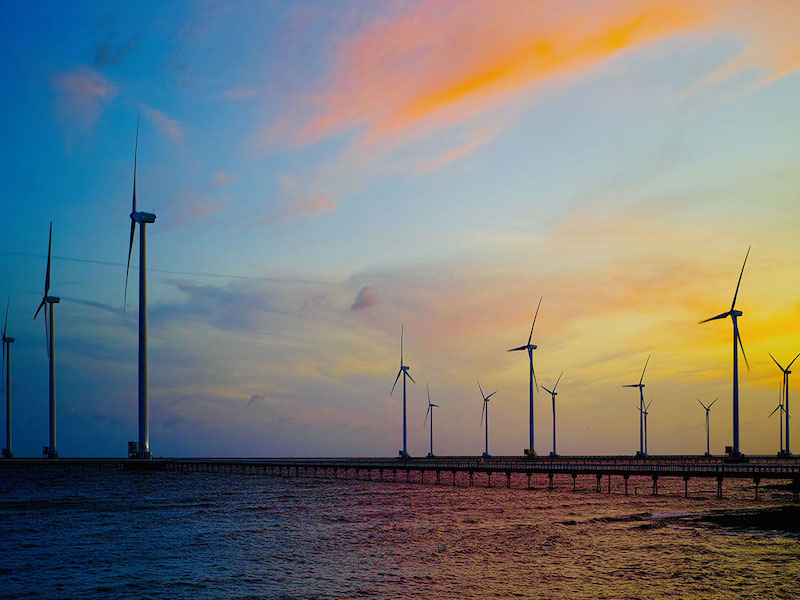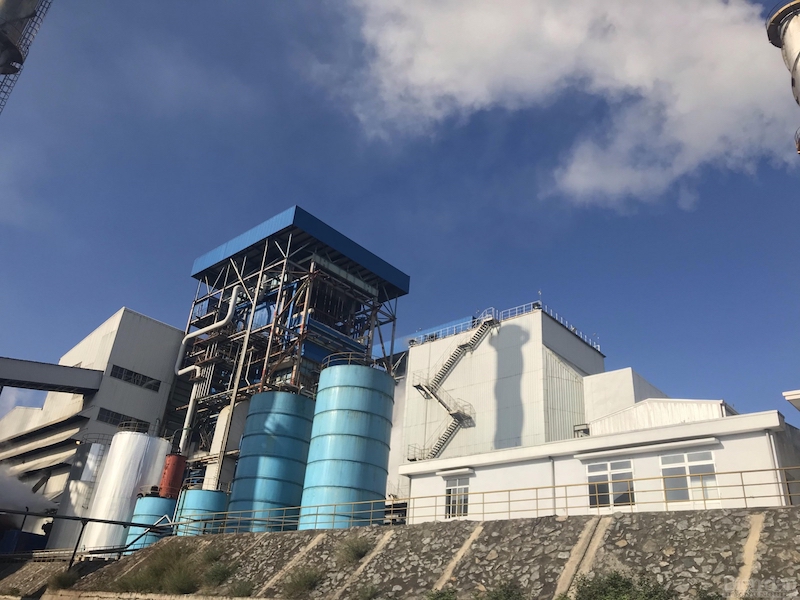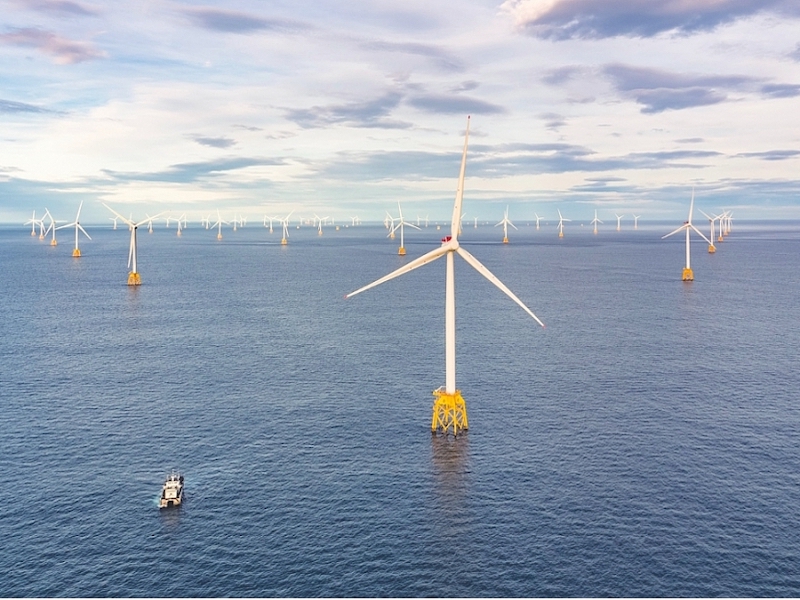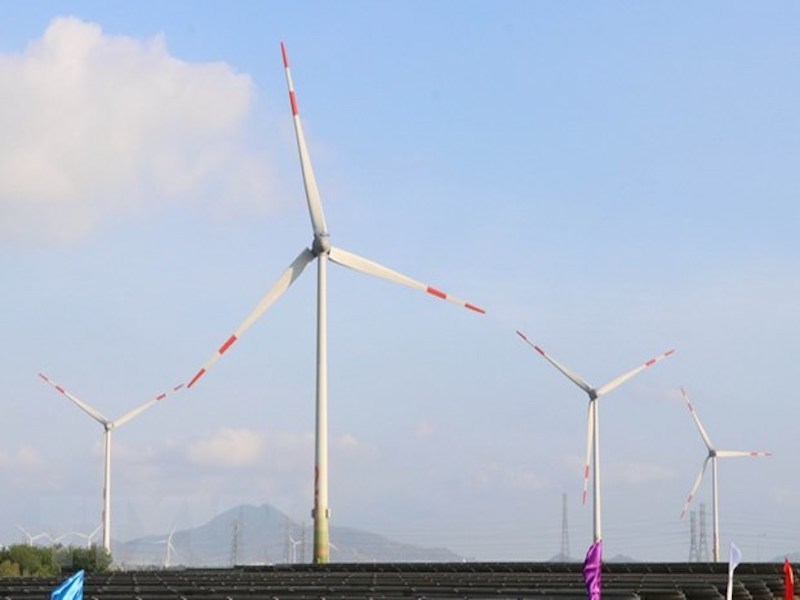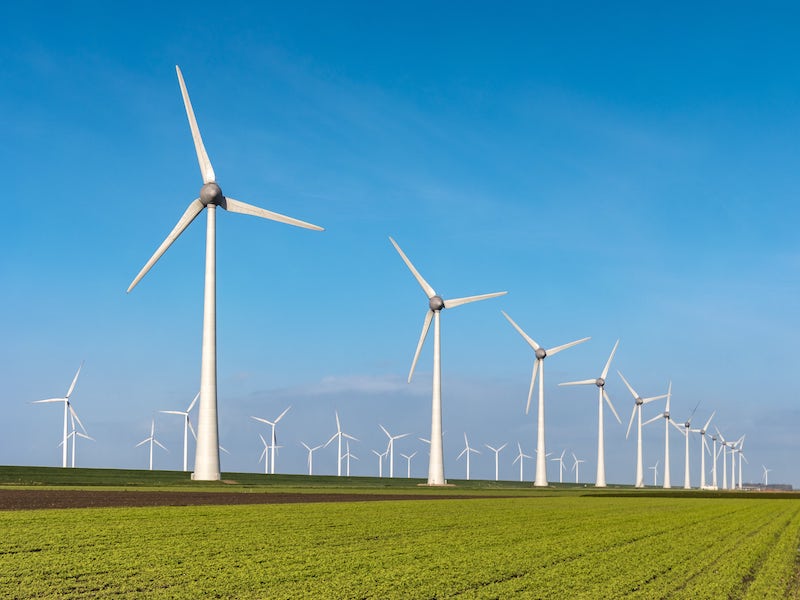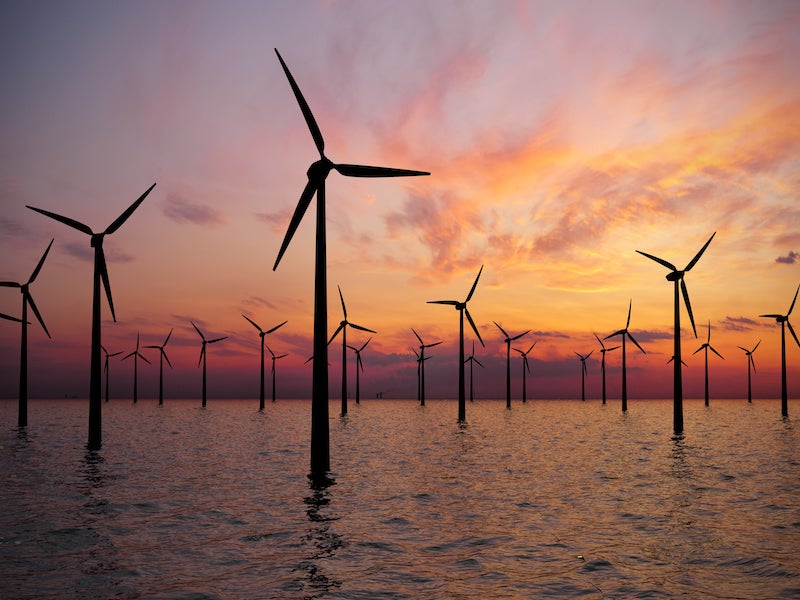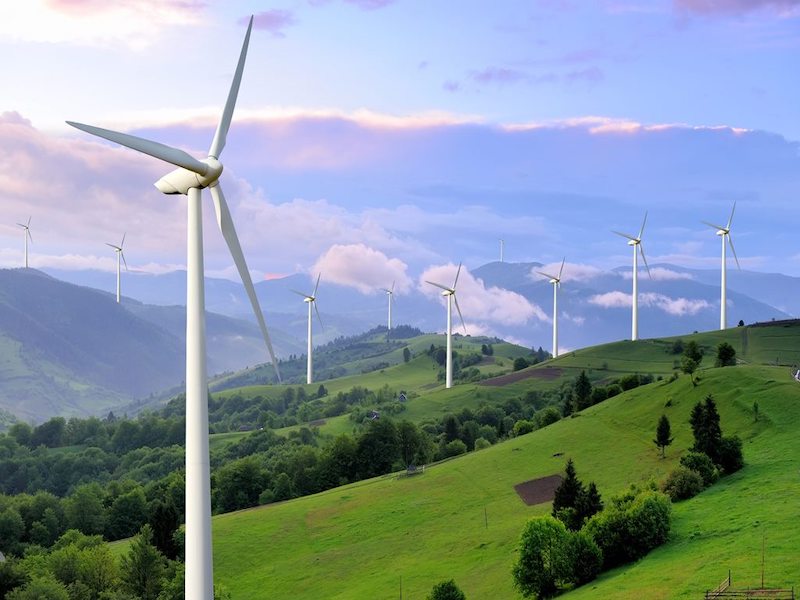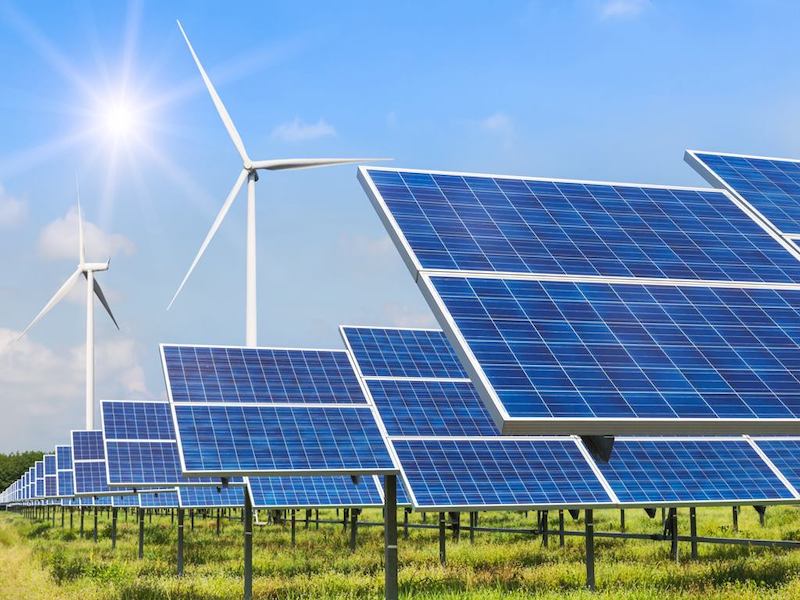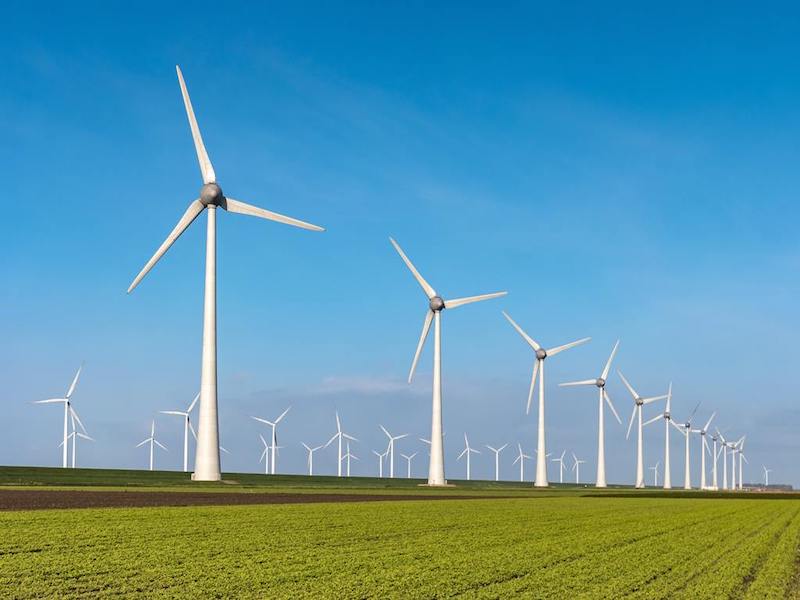By the middle of the 21st century, renewable energy will account for 44.4-57.7% of the country's total electricity capacity. However, the Draft Power Plan 8 also clearly shows that the challenge in solar and wind power development is to build a synchronous power transmission grid, stabilize the system and solve the problem of excess power. Many experts believe that the offshore wind power development model associated with green hydrogen production is the solution to this problem.
What is green hydrogen production?
Green hydrogen production is the process of using electricity from renewable energy to capture hydrogen gas from the separation of chemical atoms in water without causing carbon emissions.
The term green hydrogen is used to distinguish it from gray or brown hydrogen, which refers to the process of producing this gas by electricity from fossil fuels (coal, oil, gas). According to the International Energy Agency (IEA), this method produced 98.8% of the world's hydrogen in 2018, but emits about 830 million tons of carbon per year.
Construction of a gas turbine model with an integrated hydrogen production unit
Considering the current renewable energy sources in Vietnam, offshore wind power development associated with green hydrogen production is considered the most suitable model. With offshore wind power, due to geographical limitations, the construction cost of the power transmission system is very expensive, the generated electricity is not put on the national grid, so it needs to be cleared on the spot. The limitations of solar power are that it is built in arid and sunny areas, and has limited access to water to carry out the hydrogen separation process. Onshore wind power projects are often built inland; while the wind power project near the shore already has a transmission system to take electricity elsewhere.
Besides integrating with the turbine, the hydrogen separation station can be built independently, the power will be delivered through the transmission system under the seabed (Image source: Tractebel)
Many potential benefits
The first obvious benefit of the green hydrogen production model associated with offshore wind power is environmental protection. Hydrogen can replace many other fossil energy sources in many fields such as transportation, power generation, oil refining, fertilizer production, etc. In 2019, Vietnam emitted 285.9 million tons of CO2. from the use of primary energy sources (oil, gas, coal). The introduction of hydrogen into economic activities will significantly reduce this figure, because the process of using this gas only generates water vapor.
By the middle of this century, hydrogen is expected to account for about 15-20% of the total world energy demand, equivalent to 500-800 million tons. Many countries around the world are developing hydrogen-based economies towards the goal of sustainable growth. Germany, Europe's largest economy, plans to invest 90 billion euros in the green energy industry in an effort to be carbon neutral by 2050. In Asia, Japan is increasing renewable energy sources. formation, including hydrogen. Faced with that trend and demand, by taking advantage of seaports and geographical location located on important international maritime routes, Vietnam can benefit from hydrogen exports to many markets in the world.
The model illustrates the structure of a project combining offshore wind power with green hydrogen production (Image source: Tractebel)
In addition, it should be affirmed that, at present, hydrogen energy has not been widely used in the Vietnamese economy. The development of manufacturing industries related to this energy source such as hydrogen batteries, hydrogen purification lines, etc. will create the necessary impetus for Vietnam to develop a team of highly qualified human resources and accelerate the process. learn, accumulate and transfer science and technology.
Sustainable solutions of Power Planning 8
Due to geographical and topographical limitations, with offshore wind power, the construction of a power transmission system requires large costs and much more complicated engineering. Currently, the model of combining offshore wind development with green hydrogen production is a solution to this challenge by providing electricity for on-site hydrogen separation plants. Hydrogen gas will be stored in gas or liquefied gas cylinders, and then transported by sea to shore.
By doing this, the draft of Power Planning 8 also solves the problem of stabilizing the national grid system. The characteristic of renewable energy in general and wind energy in particular is its dependence on natural conditions. This creates a risk of unsafety of the power system because when the load demand is high, the performance of the wind turbine will decrease because the wind speed is not guaranteed, and vice versa. This is exactly what happened in the hot season of 2021, when many solar power projects could not connect to the national grid despite many forecasts about the possibility of electricity shortages across the country. In the future, if the full potential of offshore wind power in Vietnam is fully utilized, the demand for releasing electricity through hydrogen production plants will be huge.
According to the World Bank, the potential for offshore wind power development in Vietnam is 599 GW, stretching across the sea from North to South.
In addition to dealing with excess electricity, green hydrogen will be a "save" when there is a power shortage. Currently, many thermal power plants in Vietnam have to import raw materials to ensure operation. In fact, in 2021, Vietnam imported 35.8 million tons of coal; By 2022, coal demand from abroad is estimated at 18-25 million tons. In the near future, the domestic power industry will continue to import liquefied natural gas (LNG) for combined gas turbine thermal power projects. Dependence on raw materials from abroad can put energy security at risk when supply chains are disrupted. Therefore, if there is preparation for investment and effective use of domestically produced hydrogen, this energy source can be a strategic reserve so that Vietnam does not fall into a passive position in electricity production.
In fact, the development of green hydrogen production, aiming to replace some traditional sources of raw materials and fuels has been mentioned many times in the Development Perspective and National Power Development Plan of the Power Planning 8. Therefore, it can be affirmed that the hydrogen production model associated with offshore wind power promises a lot of development potential, brings many benefits and is the solution to the current challenges of the power industry./.



